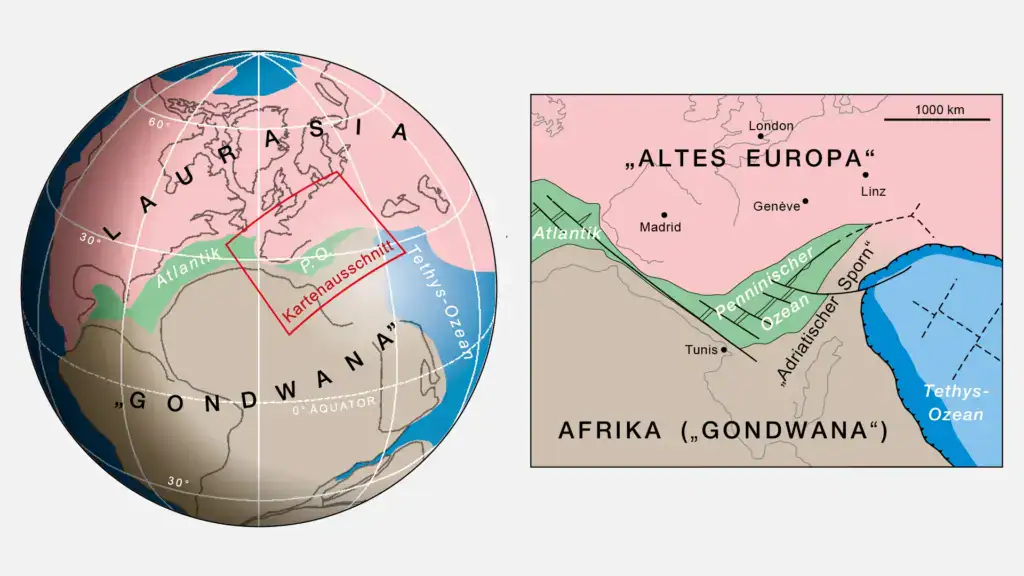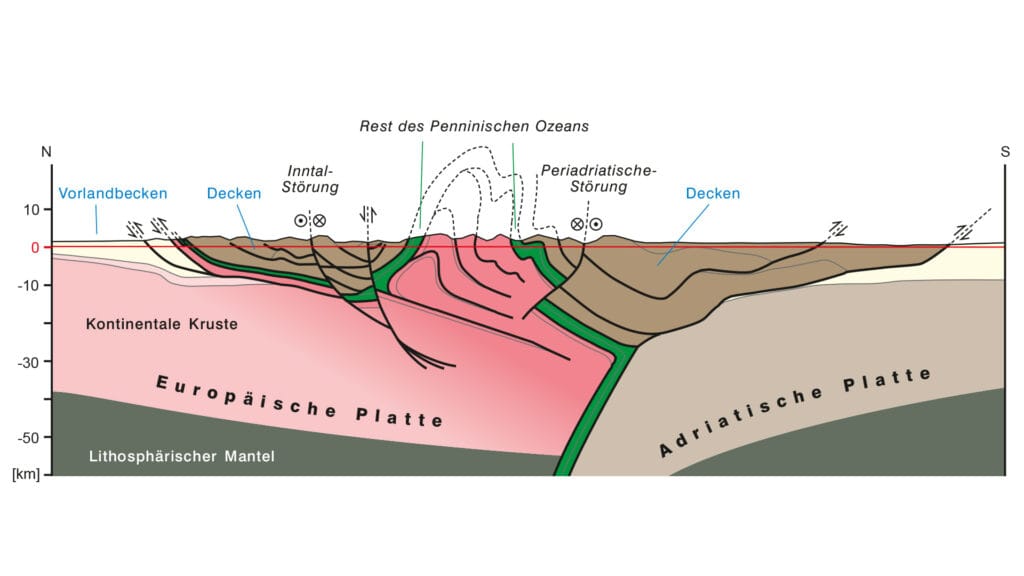Throughout Earth’s history, plate tectonic processes have continuously reshaped the distribution of land and sea. Continents drifted apart, oceans opened and later closed again.
The Alps formed from rock material originating from two continents and two ancient oceans that occupied the region of present-day Central Europe between 240 and 40 million years ago. To the north lay “Old Europe,” while to the south was Africa, part of the supercontinent Gondwana. Extending from Africa was the Adriatic Spur, a landmass that long served as a bridge between the two continents. To the east, the ancient Tethys Ocean stretched, connected to the Pacific, while to the west, the Penninic Ocean—a former extension of the Atlantic—extended into what is now the Alpine region.

The Alps were formed from rock material from two continents and two oceans that shaped Central Europe millions of years ago. The Tethys Ocean in the east and the Pennine Ocean in the west once separated “old Europe” from Africa, whose “Adriatic Spur” formed a link between the two continents. (Image source: Schuster et al., 2015)
Ancient Oceans
When the present-day Alpine region was still part of the shallow Tethys Ocean, massive limestone deposits accumulated on the seafloor. These limestones now form the foundation of the Northern Calcareous Alps. Their sediment layers contain numerous fossils of marine organisms, providing clear evidence of the rock’s oceanic origin. As the continental plates of Europe and Africa gradually drifted towards each other, the ancient oceans began to close, and their rock formations were subducted beneath the advancing landmasses.
The great collision of Europe and Africa
Around 65 million years ago, the African plate eventually collided with the Eurasian plate. This massive tectonic force compressed, folded, and uplifted the rock layers—along with the former seafloor—pushing them to great heights. This collision marked the beginning of the Alpine orogeny.

The illustration provides a schematic representation of the formation of the Alps through plate tectonic movements in the Earth’s crust. During this process, various rock layers, including the former seafloor, were folded and uplifted. The proportions of the Earth’s interior are not to scale but are exaggerated. (Image source: Own illustration)
Due to the immense pressure and high temperatures during orogeny, metamorphic rocks such as gneiss and schist were formed. Locally, melting processes led to the formation of magmatic rocks such as granite.
The Alps and Their Present Appearance
Erosion began shaping the landscape that had emerged from the sea. The great ice ages of the past millennia further sculpted the Alps, adding the finishing touches to their present form. Flowing glacial ice masses, carrying trapped sediments and depositing moraines, carved out U-shaped valleys and formed ridges and steep peaks.
Traces of the Formation of the Alps in the Rofan
The geological processes that created the Alps are clearly visible in the Rofan range. This mountain range is the result of hundreds of millions of years of geological history—from the deposition of sediments in a shallow sea to the uplift and deformation of these rocks. The fossils found here are remnants of a long-gone marine world and evidence of the immense forces that shaped the mountain formation.

